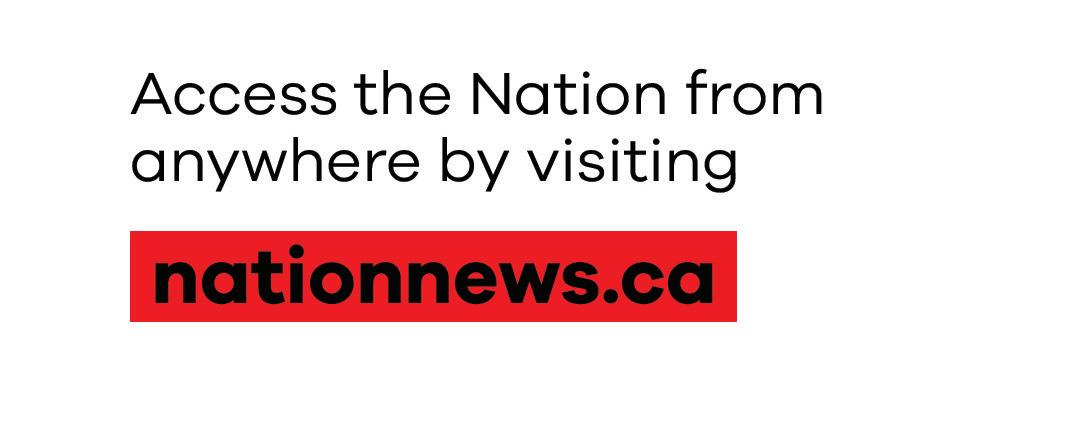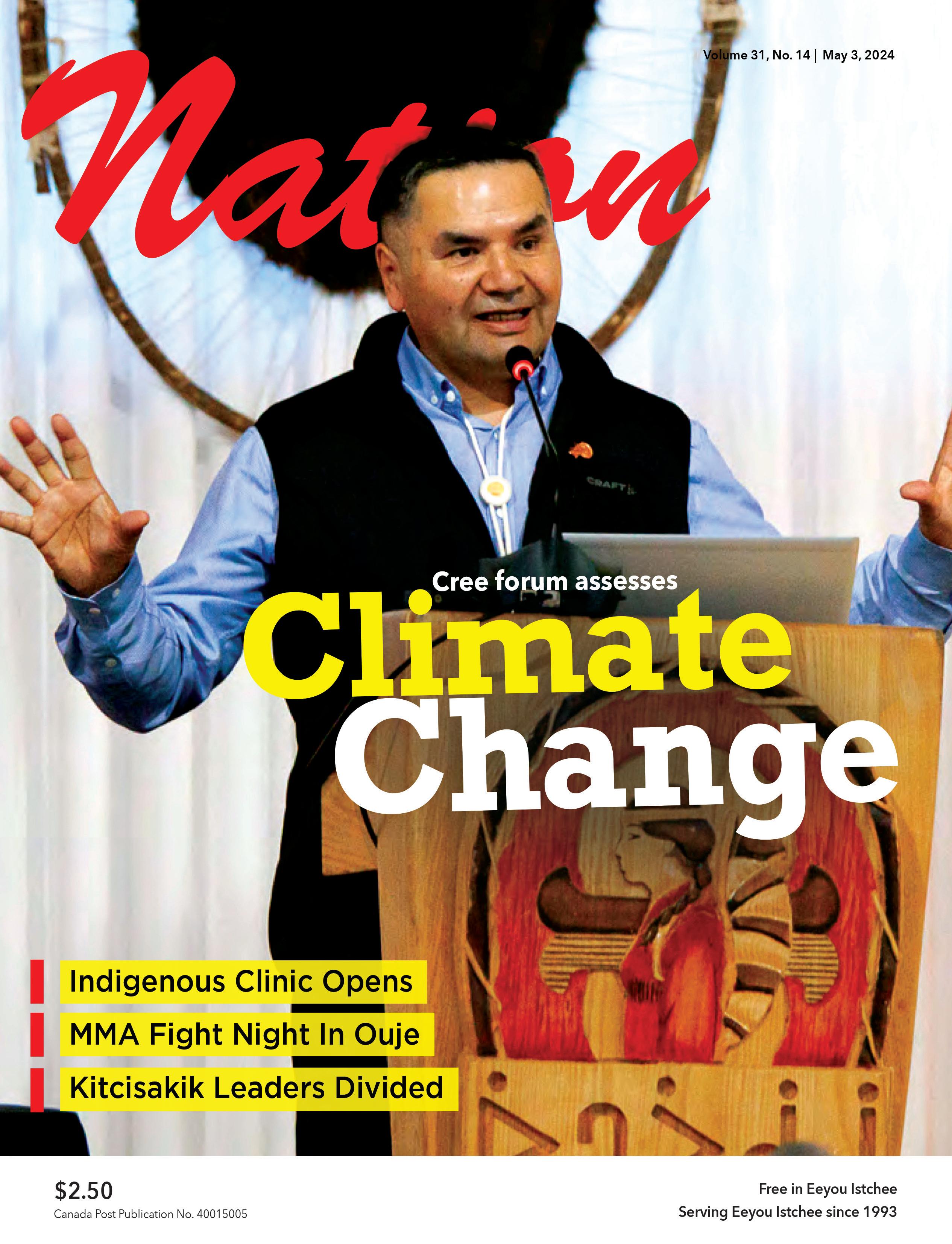




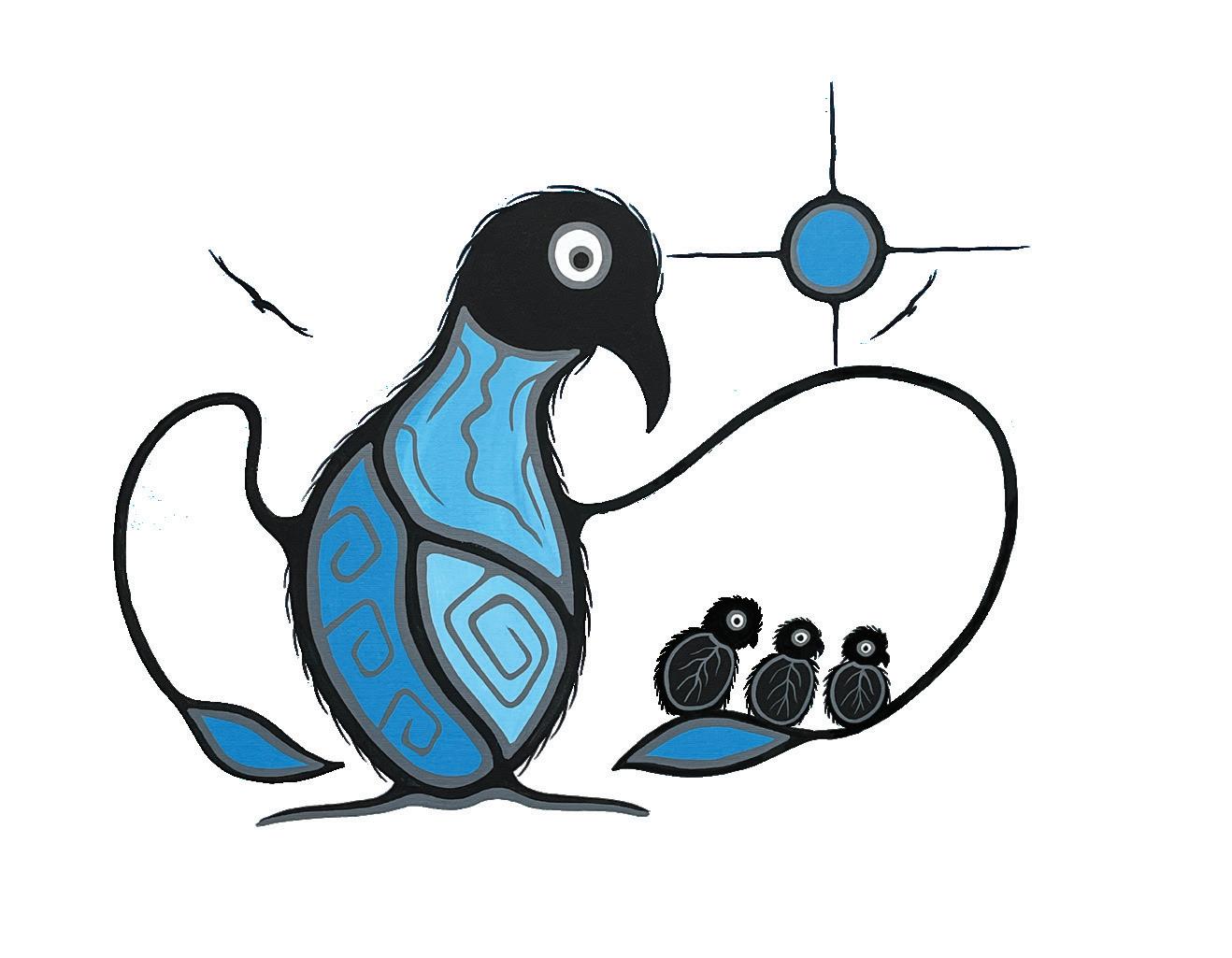
Join us on this 3-day exploration conference aimed at connecting First Nations, Métis, Inuit and university communities to create meaningful change in support of Indigenous education and implementing the Truth and Reconciliation Commission (TRC) Calls to Action. Participants will explore critical issues related to education for First Nations, Métis and Inuit students and Indigenizing educational institutions in response to the TRC Calls to Action through these sub-themes:
• The Power of Storytelling: Crafting Compelling Narratives
• Language and Culture: Elders and Cultural Practitioners in The Workplace
• Cultural Diversity: Celebrating Differences and Building Bridges
• Shaping The Future: Trends and Insights in Implementing Truth and Reconciliation
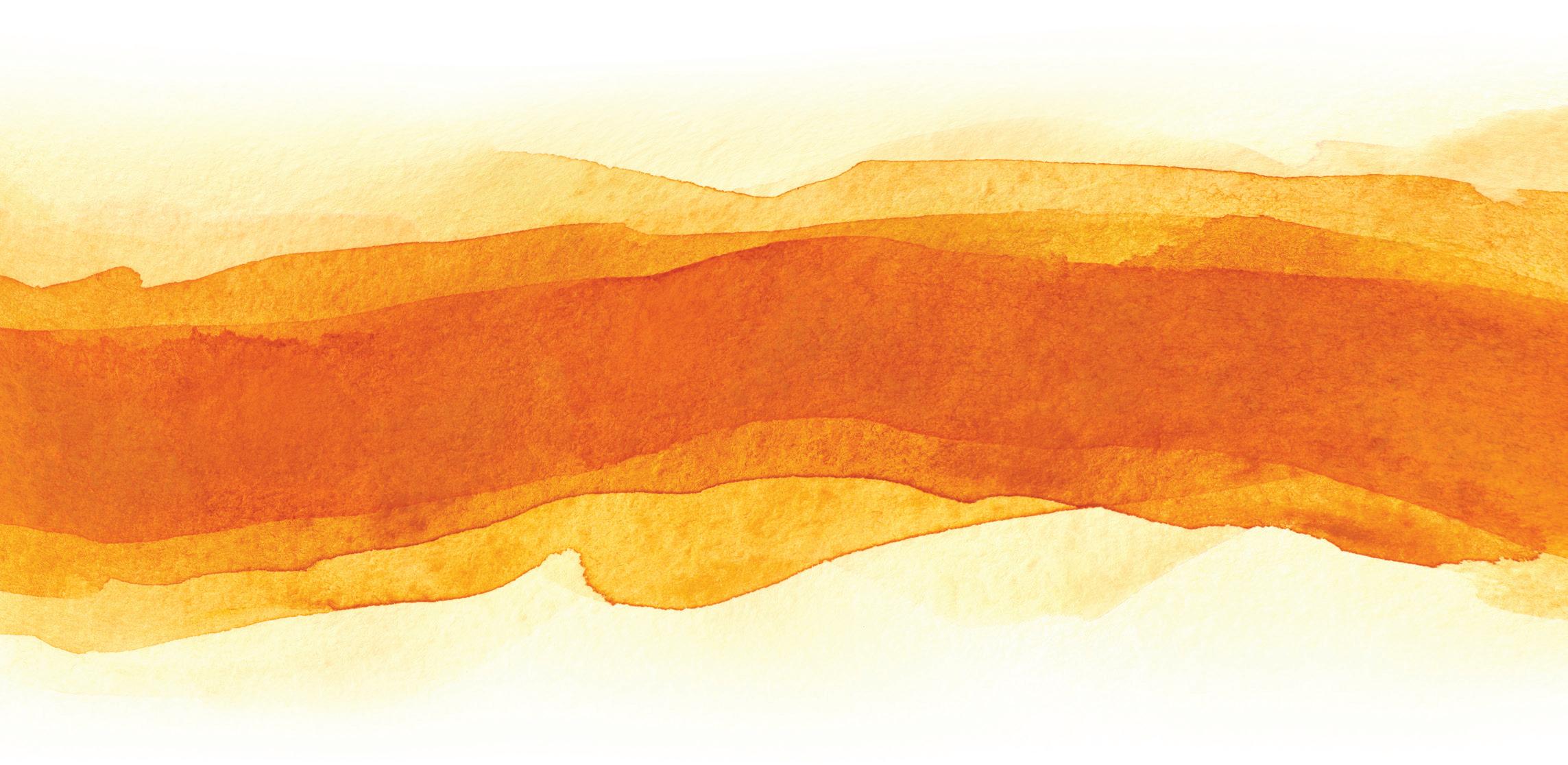
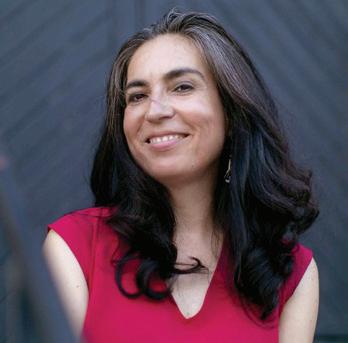
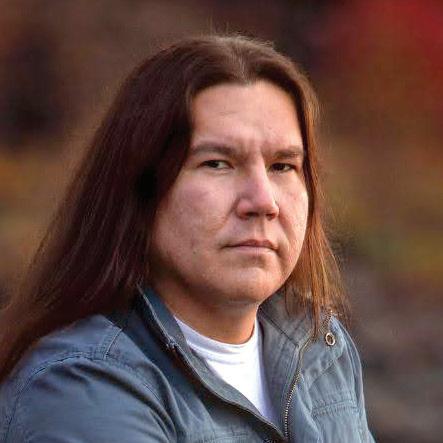
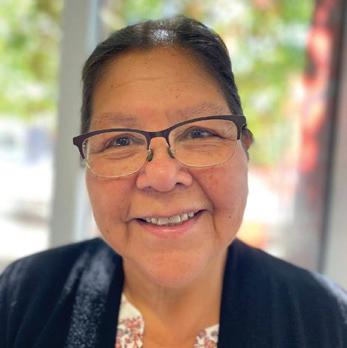
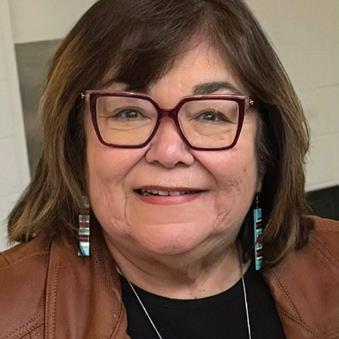




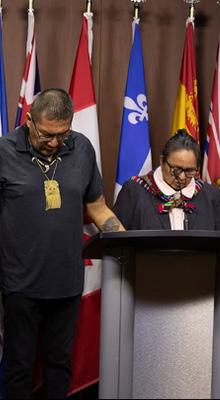




by
Will NichollsThere was electricity in the air when Kahnawake Grand Chief Kahsennenhawe Sky-Deer spoke about a special moment in Mohawk history. She was referencing the co-ownership deal on a proposed $1.1 billion transmission line to export yet more electricity to New York City that the community signed with Hydro-Québec.
The latter is trumpeting the fact that this is the first time they are sharing ownership of a transmission line or infrastructure with a third party – and an Indigenous community at that.
At times during the April 18 press conference in Kahnawake it seemed like Sky-Deer was talking for all Indigenous Nations in Quebec and Labrador even though it was only for a small area in southern Quebec where no large-scale dams exist. Many New Yorkers, including some environmental groups, have brought the story and Hydro-Québec’s new image.
In fact, so much that Hydro-Québec CEO Michael Sabia felt it was no problem to say that the Crown corporation would run out of energy surpluses by 2027 and will need to build dams and wind farms on Indigenous lands. He added that this partnership is a sign of things to come.
Does that mean that the Cree and the Algonquins will be seeing some partnership co-ownership of the transmission infrastructure going through their territories? We all doubt it given the history of colonialism. For the Cree and Inuit deals were already made, as an excuse, for example. For the Algonquins, Innu and other affected First Nations they will be considered “grandfathered,” meaning they happened in the past before this new
era of possible partnerships and reconciliation.
As a Cree one wonders about the prices we pay for electricity. We not only have the dams located in Eeyou Istchee, but our rivers were also diverted. Transmission lines running through the territory used Agent Purple (cousin of the banned Agent Orange used in Vietnam) as a defoliant (kills plant life and more). Huge, flooded areas caused mercury poisoning of the fish and wildlife living there, all of which has contributed to climate change. Plus, we have more than our fair share of power blackouts. Do I need to go on?
As for power blackouts, HydroQuébec has admitted that 2023 was one of the worst years in the past 15 years. They say they will work on improving the system.
The idea behind the creation of HydroQuébec was that it would take the power out of the hands of exploiters and give Quebecers cheap rates for electricity. It
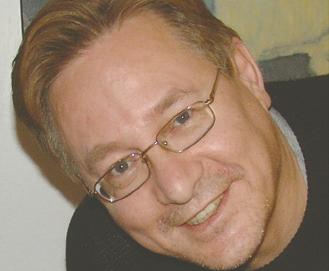
started changing as big industries such as the aluminum smelters paid peanuts while ordinary people paid more.
Exports to the US said to assist in paying for the projects became a cash cow, with the Quebec government taking a hefty chunk of the Hydro-Québec profits for themselves, in reality a hidden tax. As the years went by since the beginning of the large-scale dams, gradually changes have been made to the initial dreams that created Hydro-Québec.
This is simply one more change. Perhaps the changes will benefit Indigenous Nations within Quebec and Labrador – only time will tell. However, one environmentalist said that the new policies may show a change in the colonial relationship by including First Nations as stakeholders, but the “government is still getting it at a discount price.”
A special moment indeed not only for the Mohawks, but we’ll see how special it is for all the other First Nations when dealing with Quebec and Labrador.
The
Quebec
government taking a hefty chunk of the Hydro-Québec profits for themselves
The Nation is published every two weeks by Beesum Communications EDITORIAL BOARD L. Stewart, W. Nicholls, M. Siberok, Mr. N. Diamond, E. Webb EDITOR IN CHIEF Will Nicholls DIRECTOR OF FINANCES Linda Ludwick EDITORS Lyle Stewart, Martin Siberok, Patrick Quinn PRODUCTION COORDINATOR AND MANAGING EDITOR Randy Mayer CONTRIBUTING WRITERS X. Kataqapit, S. Orr, P. Quinn, J. Janke DESIGN Matthew Dessner SALES AND ADVERTISING Danielle Valade, Donna Malthouse THANKS TO: Air Creebec
CONTACT US: The Nation News, 918-4200 St. Laurent, Montreal, QC., H2W 2R2 EDITORIAL & ADS: Tel.: 514-272-3077, Fax: 514-278-9914 HEAD OFFICE: P.O. Box 151, Chisasibi, QC. J0M 1E0 www.nationnews.ca EDITORIAL: will@nationnews.ca news@nationnews.ca ADS: Danielle Valade: ads@nationnews.ca; Donna Malthouse: donna@beesum.com
SUBSCRIPTIONS: $60 plus taxes, US: $90, Abroad: $110, Payable to beesum communications, all rights reserved, publication mail #40015005, issn #1206-2642 The Nation is a member of: The James Bay Cree Communications Society, Circle Of Aboriginal Controlled Publishers, Magazines Canada Quebec Community Newspa per Assn. Canadian Newspapers Assn. Les Hebdos Sélect Du Québec. Funded [in part] by the Government of Canada. | www.nationnews.ca | facebook.com/NATIONnewsmagazine | Twitter: @creenation_news


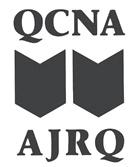
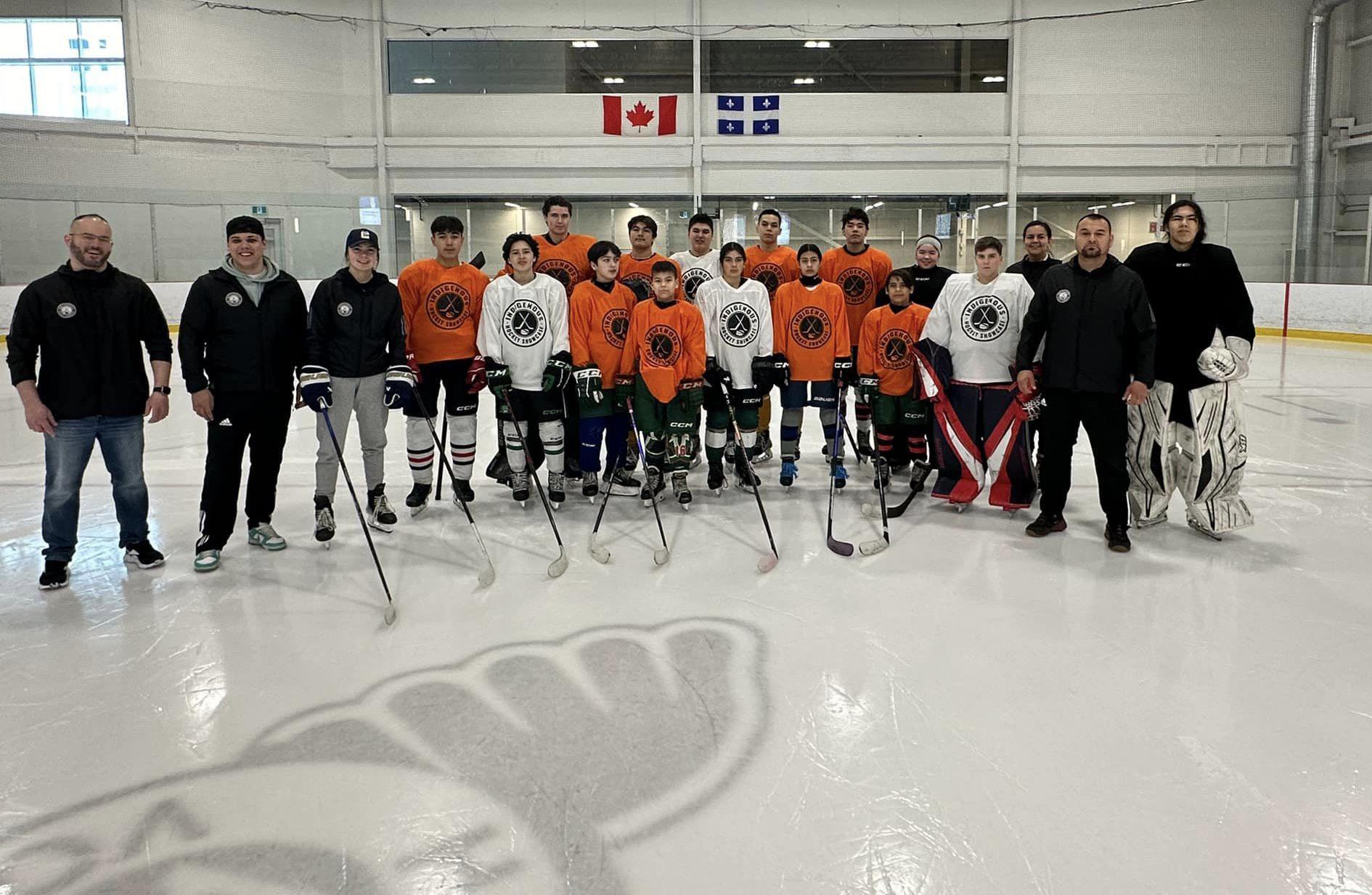
In an athletic display of talent and opportunity, the Indigenous Hockey Showcase held at the Slush Puppie Centre in Gatineau April 12-14 was attended by 100 Indigenous student-athletes from various communities.
Representing Cree, Innu, Atikamekw, Ojibway, Mississauga, Kanien’kehá:ka, Huron, Inuit and Algonquin, these athletes showcased their skills on and off the ice. The event also attracted representatives from US prep schools and colleges, creating a platform for these young players to explore avenues for combining education with hockey.
The weekend was testament to the aspirations and resilience of Indigenous youth. The event was deeply personal for some, like Zane Washipabano, son of the late Charly Washipabano, a lead organizer of the showcase. Charly, who passed away in 2023, was widely known across the Cree Nation as the first James Bay Cree to play NCAA hockey and his spirit and love for the game left lasting impacts on Eeyou Istchee sports.
Zane is following in his father’s footsteps and was a strong presence throughout the weekend. He encapsulated the spirit of the showcase in a few words: “We are here to show our power and our
strengths. And to show who we are to the scouts, both as players and people.”
It was a moment of honouring legacy and paving the way for future generations. “I am here at the showcase today, first and foremost because it was something my late dad was so involved in,” said Zane.
Nine First Nations communities were present, with participants from across Quebec and Ontario. Zane remarked on the camaraderie, stating, “It’s kind of cool seeing all the different Cree Nations here.”
Showcase participant Amberly Neeposh stated that for female hockey players, the showcase meant an opportunity to play and be scouted on a broader stage. “All the Indigenous girls get the chance to play far away – I’m pretty excited,” she said, noting how many connections she made with other girls’ teams.
The showcase was more than just a display of hockey skills. Physical testing was led by Mike Diabo from KitiganZibi, in collaboration with the Ice Hockey Research Group from McGill University and the Indigenous Hockey Research Network represented by Dr. Jordan Koch.
One event head organizer, former NHL player John Chabot, expressed pride in the turnout. “We want the coaches to see
the kids in practice, how they work, how they listen, and their attention to detail,” he said, highlighting not just the athletic prowess but the discipline demonstrated by the players.
The plan is to expand the showcase so that it includes all age groups. Chabot encourages young Cree players to give it their all this season, because their chance to be at the next showcase will come quicker than they expect.
“If you’re under 13, you get on the radar,” explained Chabot. “If you’re an under 15, you’re at the next step, and under 17 you’re at that point where you can be invited to the showcase the following season.”
Even if many won’t make the NHL, Chabot is a firm believer in the valuable life experience to be gained from competitive team sports, especially those that bring Indigenous communities together. He says that the confidence, resilience and work ethic gained in team sports like hockey are invaluable skills that will help these athletes for the rest of their lives.
“If you can translate that to every other part of your life, and if you’re willing to do that, hockey can be a vehicle to give you an opportunity,” said Chabot. “We are using hockey to open doors.”

“The social economy is a space and a practice where economics is at the service of social ends, not the other way around.”



Funding Grant for Social Economy Projects


EXAMPLES OF SOCIAL ECONOMY PROJECTS YOU COULD START IN YOUR COMMUNITY:
Thrift stores
Cultural & wellness camps
Community markets
Meals on Wheels
Local transportation
Greenhouse Programs for persons with special needs
Community kitchens
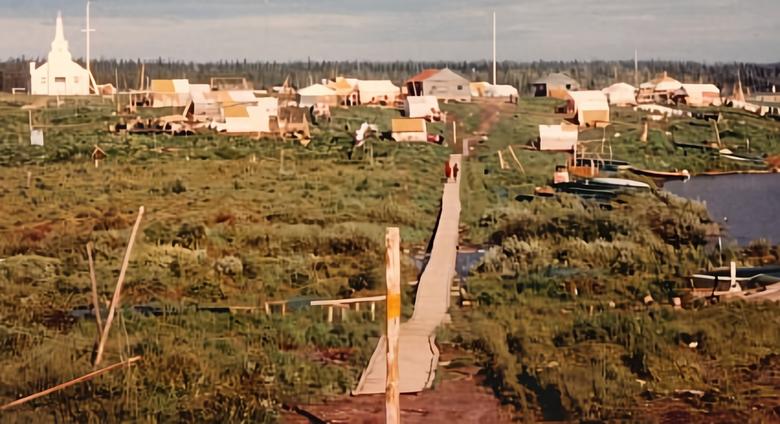

peggy.petawabano@cngov.ca

 by Patrick Quinn, Local Journalism Initiative Reporter
by Patrick Quinn, Local Journalism Initiative Reporter
Native Montreal opened Montreal’s first culturally safe healthcare clinic for Indigenous people April 12. It provides holistic and tailored care that complements existing public services for patients’ medical and social needs.
“You can meet your doctor, get your appointment for a blood test and get your follow-ups by a nurse all in house,” explained Philippe Tsaronséré Meilleur, executive director of Native Montreal. “You’re not going to different places because we know that’s a logistical nightmare. To make this model work, we had to force the system to change their ways.”
The initiative has been in development since Native Montreal’s foundation in 2014, inspired by the innovative model of the Minowé clinic at the Native Friendship Centre in Val-d’Or. The latter’s integrated services have been replicated in urban settings such as La Tuque, where Meilleur visited during his second week on the job.
It wasn’t until the pandemic and the 2020 death of Joyce Echaquan that the province recognized the need for culturally appropriate services. But there was still resistance to establishing a wrap-around service model. Eventually the health system was convinced that Native Montreal’s inviting space and cultural sensitivity training would help treat Indigenous people.
“Indigenous people have avoided healthcare for a long time,” Meilleur told the Nation. “We’ve created a culture of avoidance in being preventative – we’re not rushing to see doctors. There’s a culture of wellness we have to bring back slowly and progressively.”
Meilleur said the Indigenous community has long faced ignorance of its needs, and issues of access, discrimination and racism that all increased distrust. Preventative care is important to reverse these intergenerational impacts. In 2023, Quebec passed Bill 32, which requires institutions to take Indigenous “cultural and historical realities into account in all interactions with them.”
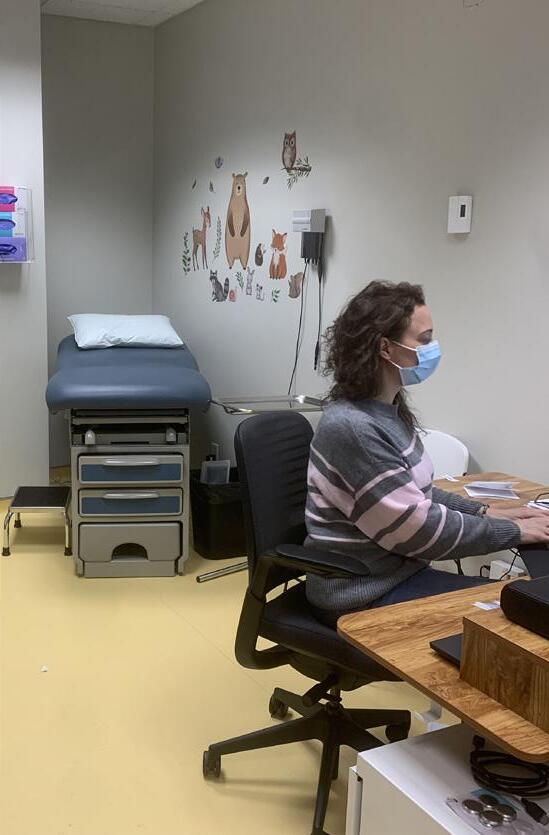
Overcoming convoluted bureaucracy where responsibilities are divided by borough was another major challenge. Located on Saint-Jacques Street in Montreal’s Sud-Ouest, the clinic shares responsibility with CIUSSS du Centre-Sudde-l’Île-de-Montréal, GMFU Verdun and other partners but is open to all Greater Montreal’s estimated 35,000 Indigenous people.
This streamlined approach to primary care was applauded by Health Minister Christian Dubé, who said it could guide widespread change in the provincial system. Dubé attended the launch along with Indigenous Minister Ian Lafrenière, who said similar projects are already being developed.
“More than half of First Nations and Inuit people don’t live in communities, they live in urban areas,” said Lafrenière. “We need culturally adapted services. That means having navigators, making them feel welcome, and ensuring that the system meets their needs rather than their needs meeting the system’s needs.”
The clinic employs psychosocial workers they call navigators who help patients access support services. They liaise with hospitals, accompany people to their appointment and check in with them afterwards. If patients experienced discrimination, navigators assist with submitting complaints.
“In health, we don’t have this customer service follow-up, usually,” said Dubé. “This navigator principle is a good example of my vision of patient service.”
This approach has already seen success with the roughly 100 patients the clinic has served since November. There have also been cases where they have been called by hospitals to assist with Indigenous people experiencing an emergency. Native Montreal helped liaison with their community’s health services.
“There are patients who have come here super anxious, very worried and who have left smiling and were like, ‘I’ve never had a doctor listen to me properly,’” said Métis health navigator Rachel Albert.
While there is limited capacity in the clinic’s first phase, with a doctor present two days a week and a nurse five days a week, they’re considering requests from the Inuit health services to support children in the Department of Youth Protection. As more people register with Native Montreal and the clinic, they intend to further advocate, recruit and build the service.
The space provides a welcoming environment adorned with colourful Indigenous art. There is an exam room for doctors, a room for nurses to complete follow-ups and additional mixed-use rooms for intervention workers. There’s also a unique cedar room where members can meet with Elders and knowledge keepers for advice or traditional cultural practices.
“There’s appropriate seating for Elders, cultural artifacts and specific ventilation,” said Meilleur. “You can see on the corner there’s a smudging site. They’ll understand they have access to Elders and all types of other supports. That’s our
challenge because we offer a lot, and it can confuse people.”
Meilleur hopes to work with youth councils, language programs and other Indigenous organizations to generate awareness about the clinic’s services. For example, he said parents registering their child for a day camp could learn how the clinic’s holistic services can take them further in life.
Meilleur believes the initiative will improve healthcare outcomes throughout the system by developing practitioner training. The doctors and nurses they train will share their cultural sensitivity among their peers through the Friendship Centre movement.
“Local Indigenous organizations will be raising the bar on quality of care for all Indigenous peoples,” Meilleur asserted. “Imagine if we have more Cree nurses and doctors who can do their internship at our clinic, that’s going to impact progressively our self-determination.”
Native Montreal is applying for more funding to establish greater healthcare capacity in Quebec’s urban areas. The family clinic’s grand opening is a milestone in creating foundational services for Indigenous peoples.
“The strength of Indigenous people is when we need to create things for ourselves, we can,” said Meilleur. “I invite any person to come by and meet our team, see what’s in it for them. If they establish themselves in Montreal, they have kids or come and study, this place is for them too.”




The Val-d’Or Chamber of Commerce named Air Creebec President Tanya Pash as its 2023 “Person of the Year” during its annual business awards gala April 20.
Appointed to the airline’s top job last July 1, Pash is a chartered accountant with a degree in business administration from the University of Ottawa. According to the Chamber of Commerce, Pash “worked her way up the ladder in her career, while offering her time and energy to build a better future for generations to come.”
Pash has served on boards of directors such as the Centre de musique et de danse de Val-d’Or and the CPE Abinodjic-Miguam, and still sits on the boards of the Fondation de l’UQAT and the Val-d’Or Regional Airport.
“Her enlightened presence and strategic vision make her a driving force for progress and inclusion,” said the Chamber. “By rising to the top of her industry, this pioneer has been able to break the glass ceiling and has ushered in a new era of opportunity for Aboriginal women.”
After her appointment last year, Pash commented, “I think it shows how far the Cree Nation has come. You see more and more women in leadership, and to be the first female president of Air Creebec, it’s an honour.”
The Grand Council of the Crees invites Cree artists to submit art proposals for their new offices at the Odea building in Montreal. This opportunity
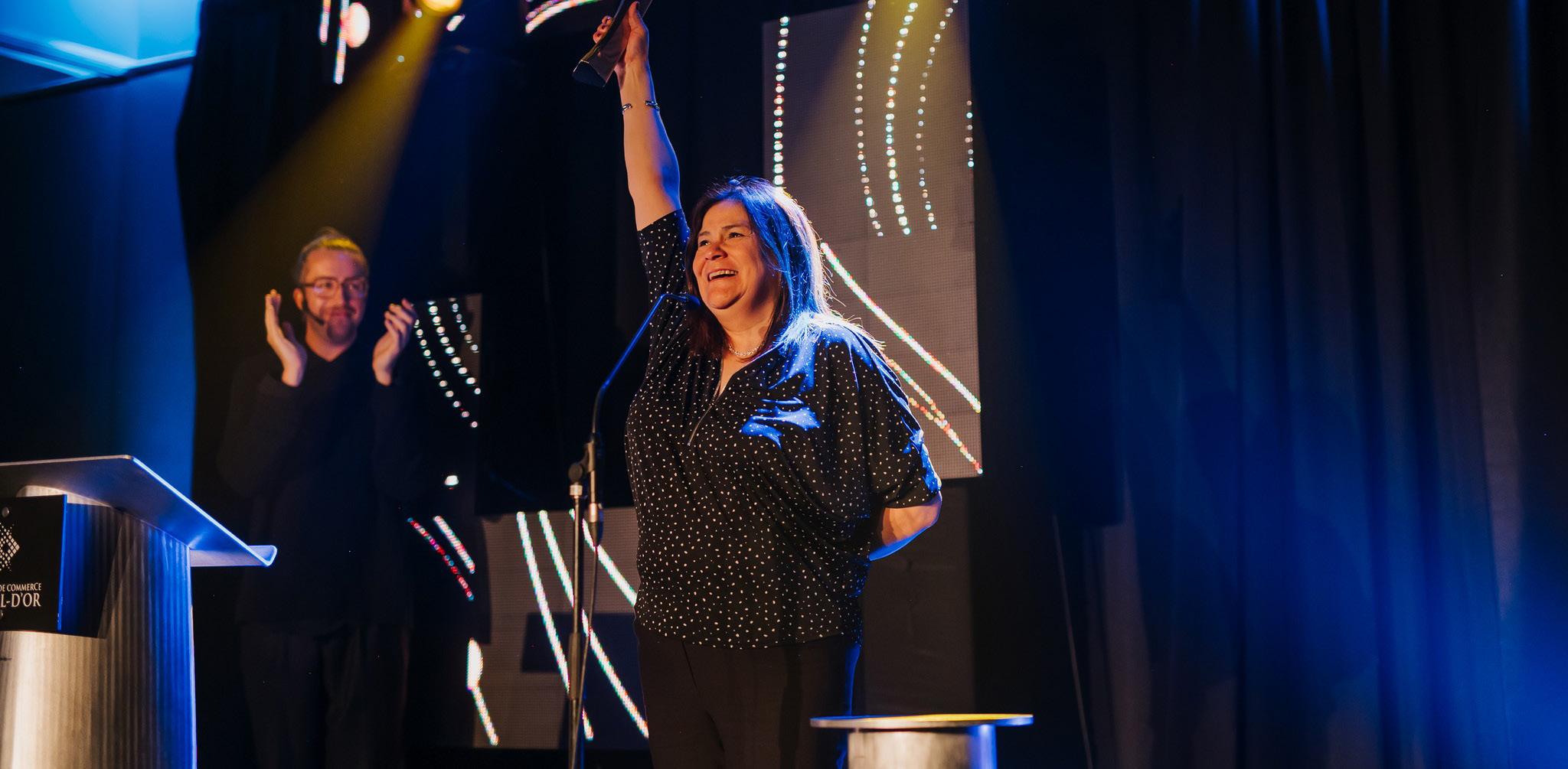
will highlight Eeyou Eenou artists and their cultural expressions within a Cree Nation Government setting.
The call is open to all adult Cree beneficiary artists, to showcase a variety of art forms representing Cree cultural elements or the Eeyou Istchee territory and its people. Artists can submit original artwork in media such as photography, painting, sculpture and beadwork.
The deadline for submissions is July 2 at 11am. Questions about this project and submissions are accepted until June 25. Email proposals to procurement@cngov.ca. Include a detailed cost breakdown and artwork specifics.
Proposals will be evaluated by the Grand Council, and selected candidates will be notified by July 12.
Warrior Up! is a compelling new TV series set to premiere on APTN May 11 that highlights the stories of young Indigenous changemakers across Turtle Island.
Hosted by a dynamic trio comprising Anna Lambe, Joshua Odjick and Joel Oulette, the show highlights the lives of remarkable youth making a difference in their communities.
Lambe is an Inuk from Iqaluit, known for her roles in shows such as True Detective, Three Pines and Trickster. Lambe’s personal connection to issues like Missing and Murdered Indigenous Women and Girls adds a poignant dimension to her interactions with the youth featured on the show.
Odjick hails from Kitigan Zibi Anishinabeg, and has appeared in The Swarm, Little Bird and Tom Longboat. His experiences on the show include gaining insights into the challenges faced by Indigenous unsheltered people, fostering empathy and understanding.
With family ties to the Cumberland House Cree and Red River Métis Nation, Oulette is recognized for his roles in Avatar: The Last Airbender and Trickster . In Warrior Up!, he explores the traditions passed down by older Indigenous generations.
A standout in Warrior Up! is Kayla Spencer of Chisasibi. Her initiatives have sparked meaningful change, including co-founding the innovative group IndigiSTEM, which encourages Indigenous students to pursue careers in the sciences.
 Photos by Pascal Fauchard
Photos by Pascal Fauchard
The Cree Regional Climate Forum brought together a diversity of voices April 9-11 in Ouje-Bougoumou to understand and plan for the repercussions of a rapidly warming planet.
The forum recognized the urgency of action in the wake of unprecedented forest fires and the warmest year on record. The Cree Nation Government’s Climate Change unit hopes to make this an annual event to develop Cree-led climate strategies.
“There’s no boundaries to climate change,” said CNG climate change manager Olivier Kölmel. “It goes beyond the region so broader collaboration is needed for the future of the communities. The big work is yet to come, but it’s exciting work.”
About 150 participants came from most Cree communities, along with some First Nations in Ontario and selected representatives from provincial and federal governments and academia. The forum’s three themes were community engagement, adaptation planning and climate leadership.
The day after a spectacular solar eclipse, the conference began by taking stock of recent climate impacts and current mitigation initiatives. Last summer’s wildfires sought to redefine the Cree relationship with Eeyou Istchee’s forests.
“Climate adaptation asks Cree Nation members to change their way of living because of the environment,” Grand Chief Mandy Gull-Masty said in her keynote speech. “Regeneration is not just one season but sometimes decades. The risk is incredibly high for the upcoming fire season.”
With fires impacting 60% of traplines and forcing many communities to evacuate, Gull-Masty emphasized that the climate had made them refugees. The province was vastly unprepared for the extent of damage. Gull-Masty said a province-wide approach would better support First Nations safety and potential displacements.
Besides loss of wildlife and long-term effects on land and water, fires resulted in emissions equivalent to 140 million vehicles running year-round.

While the hazardous smoke reaching New York City made international headlines, the Cree Nation will be releasing a documentary next month to illustrate its aftermath in Eeyou Istchee.
“There’s a realization everything is intertwined,” said Kölmel. “You may be breathing in smoke a day or two, but the communities had it for months. We went north of Waswanipi by the Broadback to film the impacts and the camps and cabins lost.”
Deputy Grand Chief Norman Wapachee moderated the forum’s forest fire panel featuring CNG fire marshal LeeRoy Blacksmith, Thomas Stevens of the Cree Trappers’ Association and federal and provincial representatives. Among proposed solutions was making better use of satellite imagery.
Blacksmith is arranging training and equipment for first responders in each community, although there are currently lodging complications in Whapmagoostui. George Cox will replace Blacksmith during his medical leave this summer.
“We’ve sent out a memo to local fire departments to start preparing for Fire Smart campaigns,” said Blacksmith. “People talked about southern animals like raccoons, cougars and deer coming in our region, which we never had.”
The warming climate is changing the distribution of many animal and plant species. Polar bears are moving south while black bears are moving north. Eelgrass vital for migrating geese has long been declining along the coast, but appears to be increasing further north, which introduces new food-security concerns as seals come ashore less often.
Waswanipi’s delegation noted abandoned forestry roads become highways for wolves, which are predators for caribou and moose. They propose restoring them with deciduous trees, which are natural habitat for species like moose and beaver while being more fire-resistant than the conifers favoured by the forestry industry.
Recent studies suggest revising logging methods to support forest resilience and conserve old-growth areas that are critically important for slowing climate change. The Cree Nation has pushed for over 20 years to implement the Paix des Braves agreement’s wildlife directives.
“It would support more species on the ground and the balance of how the forest is being sustained,” Kölmel explained. “The province was asking how to balance economic interests – priorities are not always shared. There are difficult choices to make in moments of crisis.”
The forum focused on constructive initiatives to make Cree communities more resilient. Workshops discussed the adoption of electric vehicles but most agreed that necessary infrastructure is still lacking in the north.


“The province was asking how to balance economic interests – priorities are not always shared. There are difficult choices to make in moments of crisis”
-CNG climate change manager Olivier Kölmel.
They also considered the possible benefits of climate change, such as harvesting maple syrup.

Several communities shared inspiring developments in their greenhouse, garden and composting projects. Whitney Blacksmith said Mistissini’s greenhouse will deliver affordable food while promoting agricultural education for youth. Stevens said that all local CTAs will receive community freezers, where local harvesters can store traditional food for families in need.
The Grand Chief suggested that the Cree way of life contributes to the reduction of emissions through actions that avoid processed meats and leathers. She believes the Cree Nation could create an innovative carbon credit system that could serve as a model throughout Canada.
“These activities we carry out as Indigenous people are good carbon offsets,” Gull-Masty asserted. “I’d like to see your ideas. When you’re doing traditional activities, ask
yourself, ‘What is my contribution to reducing emissions?’”
The CNG collaborates with research institutions to establish eddy co-variance towers uniquely designed for the territory. This new environmental monitoring technology measures water evaporation and greenhouse gases absorbed or emitted throughout the year – useful for calculating carbon credits.
A declaration was drafted on the forum’s final day, titled
Wanishkaakwh or “Wake Up!” It set the tone for a permanent regional advisory committee on climate change and the direction for each community.
“Cree ancestors always found ways to adapt to changes in the environment and thrive in these conditions,” said Kölmel. “The overall message is one of hope and working together to face the oncoming challenges.”









Just four months ago, Ultimate Fighting Championship legend Georges St. Pierre was ringing in the New Year with the Cree Nation of Norway House in Manitoba.
“Welcome to Norway House, champ!” said Denis Swanson as he filmed the mixed martial artist standing in front of an eight-by-four-foot hole cut out of a frozen lake.
“I am about to experience the coldest water I’ve ever had,” exclaimed St. Pierre, surrounded by community members and local firefighters. “Because I am here with the Cree Nation of Norway House and nature is giving us all this for free. Let’s go!”
Shedding the traditional blanket and beaded skin boots gifted to him by the First Nation, St. Pierre plunged into the freezing water as the crowd cheered. “It’s not fun,” St. Pierre said through gritted teeth, once sitting neck-deep in the glacial lake water. “But the benefits, they come after.”
The experience struck a chord for the retired fighter, who returned to visit a Cree community this month, this time in Eeyou Istchee as a special guest of Ouje-Bougamou. The community hosted the Montreal Fight League’s “MFL 36 Ouje Fight Night” April 14, and St. Pierre was there to take in the mixed martial arts action.
The Ouje-Bougoumou martial arts scene is not just about legendary figures like St. Pierre showing up as a VIP guest, but also about the reason he was there – to see rising local stars like Quinn Blacksmith and Albert St. Pierre.
Both from and fighting out of Ouje, these two Cree fighters have been ringing the bell on a national level. Blacksmith has made waves in the MFL as the youngest twotime champion while boasting a 3-0 record. Teammate Albert St. Pierre also remains undefeated in his young 2-0 career going into MFL 36.
For Blacksmith, street fighting was a part of growing up. “My buddies would get into fights, and we ended up having to defend ourselves,” he said.
In 2020, things changed for Blacksmith; he started practicing mixed martial arts for self-defence, training through a fitness program offered in the community. Now 21, Blacksmith is the youngest two-time champion in the MFL. But he learned more than self-defence.
“I know from personal experience that it helped me a lot with my anger,” he said. “Emotions can be high when you’re a young teenager and you need MMA to control them, to harness them. I hope that one day kids will see that.”
At MFL 36 Ouje Fight Night, the air was charged with anticipation as fans witnessed thrilling victories from rising Cree stars. Although Blacksmith didn’t compete, the night belonged to hometown hero Albert St-Pierre, who clinched the MFL Light Heavyweight Championship with a stunning KO/ TKO victory over Brandon Uguccioni in Round 3.
With this win, St-Pierre’s record rose to an impressive 3-0, securing his
position as the number three ranked fighter among Canada’s Amateur Light Heavyweights.
This success goes back to 2020 when Ouje-Bougoumou asked Maz Mas to establish the fitness program that Blacksmith joined. Mas turned the fitness program into a fight team, something he said could act as an outlet for young men to “let their aggression loose” in a healthy way, while burning off energy in the gym. Working with the first group of fighters, Mas said he noticed how strong many of them were.
“I tell them that all they’re missing is some discipline and technique because with that natural strength they should be unstoppable,” he said.
Mas was supposed to spend only six months in the community in 2020. But now he spends months at a time there as a fitness instructor. His home is in Montreal, where he is president and a promoter for MFL.
“It’s an international stage, and these guys keep coming out on top,” said Mas. “It’s important to remember that MFL features over 90 competitors from Ontario, Quebec and the States, so they got something special going on here in Ouje-Bougoumou.”
Mas noted that every Cree fighter who participated in last year’s events won their fight, a feat accentuated by the fact that Blacksmith and St. Pierre walked away with championship belts in their respective weight classes.
“To have two Cree guys on top there in my rankings in first place as champions, it says a lot.”
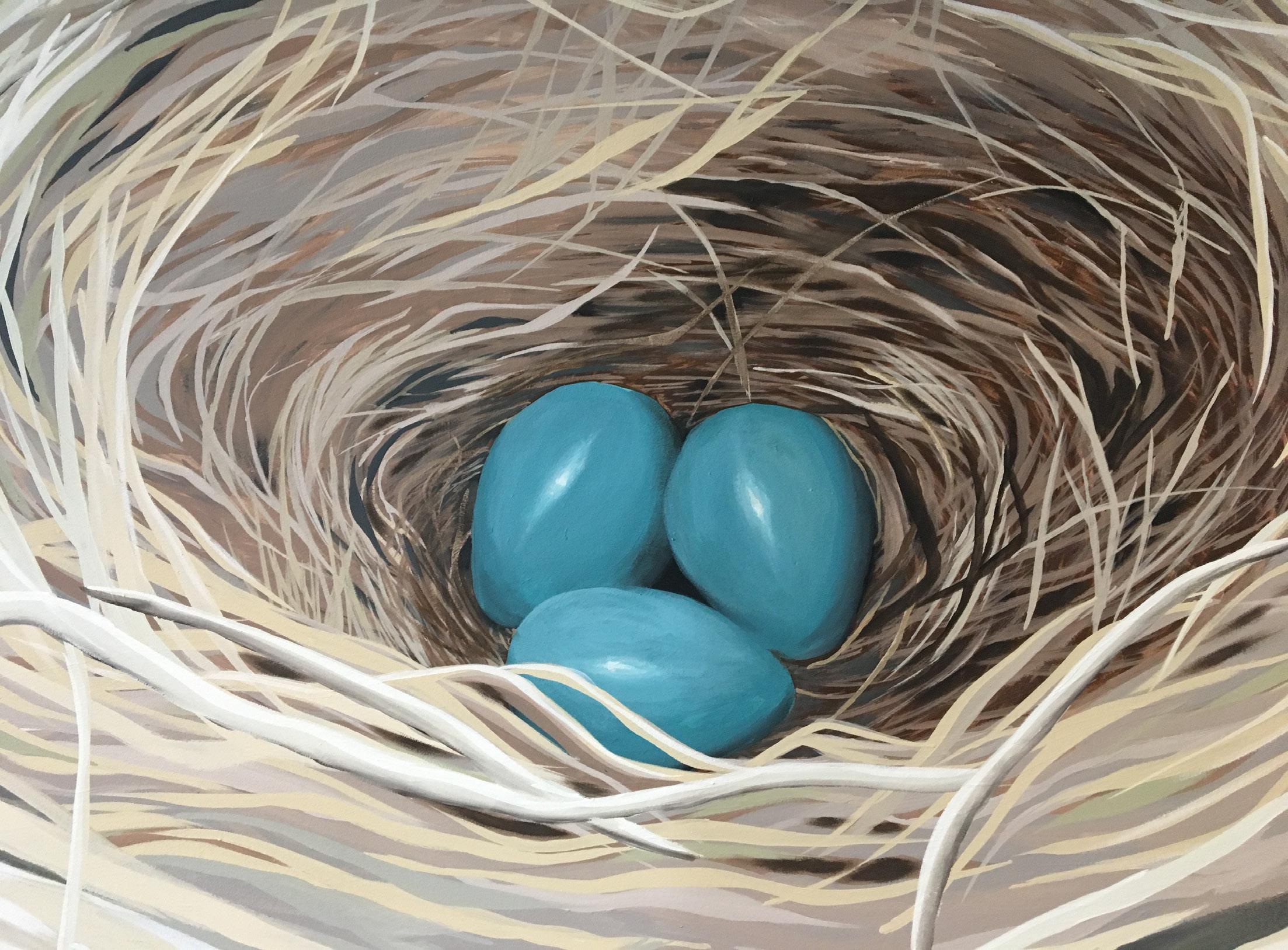

The Eenou-Eeyou Community Foundation (EECF) provides philanthropic support for the Cree Nation of Eeyou Istchee. The Foundation is Cree-led, with a Board of Directors comprised of Cree government and Cree entity leaders. The Foundation promotes the social and cultural development priorities of the Cree Nation and works to build capacity and resiliency in the Cree communities and institutions.
Chief Executive Officer
Reporting to the Chair, the Chief Executive Officer is the senior staff person of the Foundation. The CEO will drive EECF’s fund development, grantmaking, community outreach, and communications efforts; will support the Chair and Board of Directors in strategic planning and governance matters; and will insure the proper functioning of the organization’s administrative and financial management.
Functions:
Fund development and donor stewardship
• Manage a comprehensive asset development program with specific targeted results.
• Seek out grant opportunities; write proposals.
• Build and maintain strong relationships with donors.
• Manage the donor stewardship program.
Grantmaking
• Implement policies, programs and procedures to attract, review and make charitable grants to Cree Entities and Communities.
• Implement and administer a system to evaluate the effectiveness of grants.
Community Outreach
• Communicate with the Cree Entities and Communities to inform them about EECF and how it can support their organization’s charitable projects and activities.
• Consult with and encourage Cree Entities and Communities to develop charitable projects for EECF’s support.
• Collaborate with Entities, Communities and other Cree actors in the effort to create and support a broader Cree civil society.
Marketing, public relations & communications
• Implement a broad communications plan to build awareness and interest in the foundation amongst potential donors, potential grant recipients, public officials, influencers inside and outside Eeyou Istchee.
• Attend events and participate in community activities to establish personal and foundation profile, and to build networks.
• Make presentations to groups as part of the ongoing public relations effort in attracting new funds to the Foundation.
Strategic Planning, Vision Development & Partnerships
• Work with the Board of Directors to update, enhance and implement a vision and strategic plan for the Foundation.
• Develop mutually beneficial partnerships to support the work of the Foundation.
Governance, board administration and support
• Work with the EECF Board to develop and implement appropriate governance policies.
• Support the Chair, the Board and committees in their work by providing relevant information as needed.
• Inspire Board participation in EECF initiatives.
Financial and legal
• Administer sound financial practices that comply with federal and provincial regulations and reporting requirements.
• Work with financial advisors to ensure appropriate investment and endowment management policies, appoint and review fund managers and ensure adequate cash flow for granting purposes.
• Ensure the completion of monthly financial statements, fund statements and annual audit as required by the Board.
Management and administration
• Ensure an efficient office to serve donors and grantees.
• Hire and manage contract or permanent staff in accordance with established HR practises.
• Ensure that the general office administration activities, including banking, mail, purchase of supplies, and data collection and input are carried out effectively.
• Prepare CEO reports for the Board of Directors.
• Must be a Cree beneficiary.
• Education: Bachelor’s degree at minimum. Master’s degree a strong asset.
• Experience: 5+ years managerial/professional experience.
• Language: English – Excellent spoken and written required. Cree – Strong spoken an important asset. French – Spoken an asset.
Knowledge and skills:
• Strong presentation and public speaking skills.
• Strong organizational skills.
• Strong capacity for diplomacy and tact.
• Strong ability to work both independently and in a team.
• Ability to work outside standard office hours.
• Ability to travel frequently inside and outside Eeyou Istchee.
• Expert knowledge of Microsoft Office suite of programs.
• Social media usage and advertising experience an asset.
• Ability in database and website maintenance an asset.
Application period:
Opening date: April 15, 2024
Closing date: June 10, 2024
Contact:
To apply, or for more information, please contact: Ross Clark
Email: ross@creefoundation.ca
Phone: 514-910-2075

Escalating crisis in Kitcisakik leads to blockades, appeals to government
by Patrick Quinn, Local Journalism Initiative ReporterAconflict among current and former leaders of the Algonquin First Nation of Kitcisakik continues to escalate after the current director general and five former chiefs went public with their concerns on March 26 in Ottawa.
“We are asking for an urgent intervention from the federal minister of Indigenous Services to put an end to this dictatorship,” said councillor Catherine Anichinapeo at a press conference. “I’ve been a witness to this for seven years. I have been subjected to workplace intimidation and misogyny.”
The group said they tried unsuccessfully to resolve the dispute internally over the past three years and there had been a public demonstration in March 2023. It’s a delicate situation for the Anishinaabe community of 300 located about 130 km south of Val-d’Or, where there is no electricity or plumbing.
On April 13, the delegation of ex-chiefs met with Quebec Indigenous Affairs Minister Ian Lafrenière and the provincial representative of Indigenous Services Canada. While ISC announced it will not interfere in Kitcisakik’s internal discussions, it called on the two sides to enter a mediation process as the conflict is preventing children from attending school.
With the band council continuing to exclude its only elected female councillor, including in efforts to rebuild its

municipal offices and convenience store that were destroyed by fires in February, the group declared they had “no other choice but to put pressure on their elected by blocking access to the community for all workers who arrive from outside.”
After a blockade on Highway 117 outside the community was established April 15, Chief Régis Penosway announced that 14 community employees involved in the blockade would be indefinitely suspended with pay. The band council appointed eight employees to handle their duties while an independent investigation is conducted.
“The allegations made by a small group of people over the past few weeks have no basis and are based only on erroneous impressions,” Penosway stated. “By setting up an independent investigation, I hope to restore the truth and finally allow the community and all our members to turn the page.”
Penosway told the Nation that he made a “personal and professional commitment” to not influence this
investigation in any way. He denied that Anichinapeo has been excluded from decision-making processes and asserted that all resolutions have respected the established rules of governance.
The former chiefs allege that Penosway is not following conflict-of-interest policies that prevent Chief and Council from administering programs and services. On March 15, the band council passed a resolution that transfers powers from director general Doris Papatie to himself to access financial records and human resources files.
The opposition group demanded the restoration of Papatie’s management powers that she has held for the last 27 years, and that education budgets be managed by an independent committee. Chief Penosway is also accused of unilaterally controlling funds for mining development and giving contracts to lawyers or consultants without following public tender procedures.
“We have a consultant who took control of the Council and is behind those decisions implemented by the


Crossword
Here’s another edition of the Nation’s puzzle page. Try your hand at Sudoku or Str8ts or our Crossword, or better yet, solve all three and send us a photo!* As always, the answers from last issue are here for you to check your work. Happy hunting.
PREVIOUS SOLUTION: Solution to Crossword:
 by Margie E. Burke
by Margie E. Burke


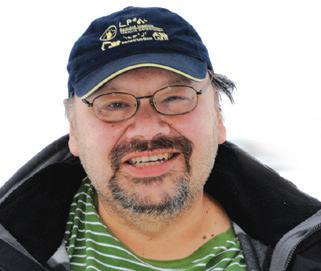
he rush to get to camp is on so we can harvest geese, caribou, bear and other wildlife that abound on our lands. I hear a small bush plane taking off with a load of cargo or passengers, noting that everyone has that new look on their faces, the one that glows with anticipation of returning to camp. Yes, it’s that time of the year again – Spring Goose Break. I tried to do a little shopping for some essentials and discovered that flour, oils and baking powder were non-existent on the shelves. I’ll just have to wait for them to be restocked, as most of the groceries are already packed and heading out to camp. The usual stuff like canned foods and snacks for the kids to keep them quiet are also noticeably absent. I guess the kids will also have to wait for their snacks.
The search for empty gas containers is high on the list as are the caps for the empty tanks and all the usual supplies are haggled over with the stock people. What has changed is the price of everything. That means there will be fewer snacks and other goods than in previous years.
As well, the myriad of types of shotshell are hard to choose from now that the usual steadfast shotshell of yesteryear has been replaced with mounds of
information. I find that choosing between a fast shotshell and an older type of shell is usually determined by cost, with the cheaper shells being chosen. Now calling the geese will be more important than ever, to bring them within shooting range.
It is patience combined with a quick eye and fast trigger finger that makes all the difference as the shotshells don’t have the same kick and kill pattern due to the change in the pellets. I guess using spent radioactive materials will have to suffice instead of the lead we used to use. Other metals don’t have the same killing edge of lead when a long shot is needed to knock down your next supper.
I guess this spring may be good for some and not so good for others, as the number of hunters who are out on the lands have quadrupled, This is good. Last year, I spent a lot of time alone, waiting for that elusive flock to come close enough for steel shot to be effective. I did see a record number of swans and cranes, but they aren’t the staple food like the spring goose is.
As I ready myself for this much-welcomed break from work, I thank our former leaders for their foresight in making this tradition a legal practice of harvest-
ing foods. Either that or the number of subsidies for foods just to get by will test our tired bank accounts and worn wallets and raise the ire of those who didn’t support our right to harvest 50 years ago. Today, it’s a tradition to leave our urban lifestyle and venture back to our roots and practice a way of life that is still very dear to us.
I look forward to the days when the sun beats down and burns our noses and exposed facial dermis and leaves us with a white racoon mask. The time of shifting winds and changing decoys to fit the impression that the pond you laboured over is a good spot to take a break.
So, remember, keep your blinds and hunting area clean and free of garbage, so that your luck won’t change for the worse when that plastic water bottle reflects enough to spook that flock away from your gun sights. In the old days, that type of sloppiness would ban you from hunting. So be clean, don’t litter.
Also, save your shot until you are sure you’ll bring down that goose. Don’t scare them off and teach them to avoid anything that looks like a pond full of decoys.
Good luck and safe hunting everyone!


It looks like the swallows are back and that is a sure sign of warmer weather to come. A couple of weeks ago I heard the honking of Niska (Canada geese) as they paused to take a break on the field behind our house in Kirkland Lake. They seemed to have moved on now and have arrived at their summer destinations on the shore of James Bay.
My family and friends have been heading out to their traditional camps for the past week or so and they are having success in harvesting Niska. This is a time where my people enjoy being on the land and practising our traditional pursuits in the way that our ancestors have since the dawn of time.
These days things are very different as the First Nation of Attawapiskat finds funding to transport many people by helicopter to the remote camps. Many of these camps are on Akamiski Island where most of my family have traditional camps and my brother Anthony and his family are situated way up north on Lakitusaki (Lake River) where my mother’s people were originally from.
Many of my family members have been at their camps for over a week and managed to get there by snowmobile. These days there is a lot of preparation involved in transporting food and equipment up to the camps so that life is a little easier than our ancestors experienced. Years ago, our people travelled to their
hunting and gathering lands by dog sled or simply by snowshoe treks lasting many hours.
The camps my family have constructed and renovated over the past few years are comfortable places in very remote areas. My brothers Paul, Joseph and their families have done a great job in setting up all the comforts of home in the middle of nowhere. They have satellite service with internet coverage, so they enjoy watching entertaining video streams and surfing the internet in between setting up hunt blinds and harvesting Niska. They now have full kitchens where they can cook great meals to share with family and friends.
I am very familiar with all the gatherings and the hunting that goes on at this time of year as I was raised in this reality. Most of my hunting for the past couple of decades has to do with taking photos of the animals and birds on the land. I have also documented much of this life in writing to share with non-Indigenous people.
I am also aware of the danger that is involved. People should be very careful to survive during these revitalizing trips to family camps. There are many risks travelling on the ice on the great James Bay by snowmobile, with severe weather and even visiting polar bears. This year I hear there have been more polar bear sightings. Thanks to the wisdom of local Elders
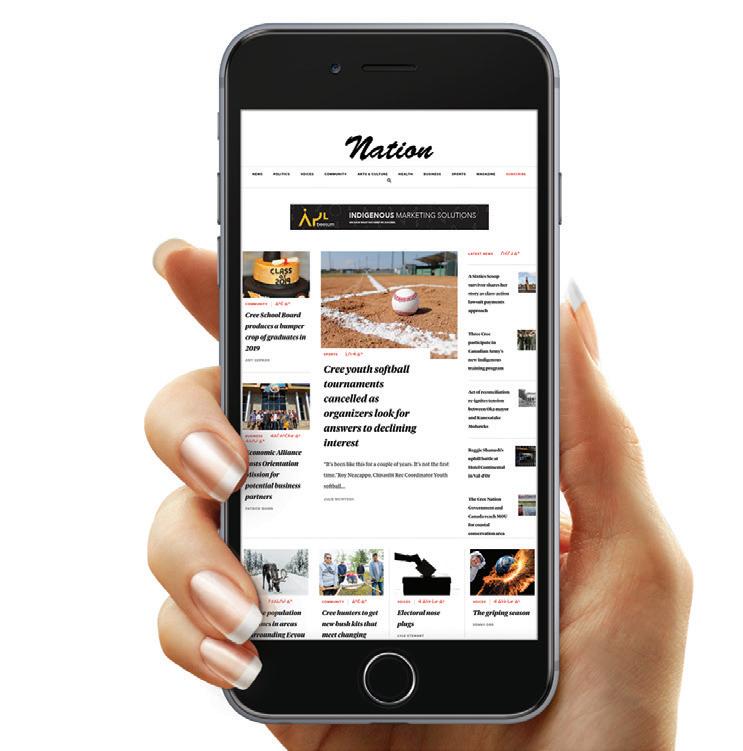

and experienced hunters, everyone is kept safe while they are on the land.
However, at times tragic things happen that result in injury or death. This past month, Joe Rickard, a young man I grew up with, died when a helicopter landing at one of the camps came in contact with him. That experience was terrible for family and friends who witnessed such a horrific situation and the loss of a kind and caring young man.
I wish everyone a good hunt and a wonderful time filled with good times and family gatherings with friends. At the same time, I send my condolences to the Rickard family and all of Joe’s friends. It is my hope that everyone has a good experience, and they all make it home safe. The treks my family and friends make out onto the land is a huge gift to the younger ones who are learning our traditional Cree hunting and gathering skills. They are seeing and feeling the power of nature and discovering how beneficial this reality is for their minds, bodies and souls.
There is a freedom there on the land on the shores of the great James Bay and the many rivers on the coast that you can only know if you are fortunate to have been born Mushkego Cree and you have the spirit of your ancestors all around you when out on your traditional lands.
Mee-noh Tah-mee-nee-ook Mee-seeway (Good traditional hunt to everyone)!

